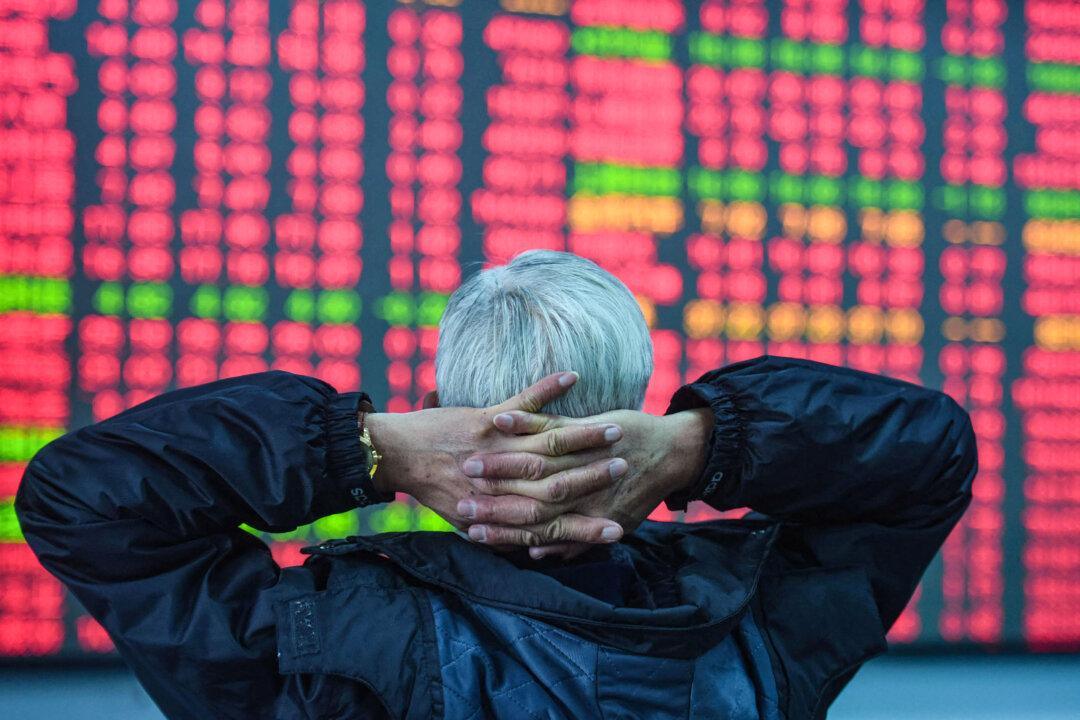China’s real estate crisis is now directly impacting other sectors of the Chinese economy. Although the property implosion is affecting trade in a variety of construction materials, its first aftershocks may have been felt in the cement and steel industries.
In 2022, according to official data, a whopping 336 Chinese construction companies filed for reorganization bankruptcy. This worsened the crisis in the construction materials industry and led to inevitable price wars.
Steel and cement are in severe oversupply as development stalls. Meanwhile, price wars within China have extended overseas, affecting the global market.
Cement Industry ‘In Chaos’
The Epoch Times recently attempted to speak to employees at Chinese cement companies to get a first-hand look at the situation. A senior construction engineer in Guangdong, speaking on condition of anonymity, told The Epoch Times on Oct. 5 that cement and concrete production has halted in many places, due to bankrupted construction companies and abandoned projects.According to a report by the China Cement Association, the annual demand for cement in China was already sluggish throughout 2022. Annual cement production totaled 2.13 billion tons, a decrease of 10.5 percent from the previous year, and the lowest production volume in a decade.
The price of cement has fluctuated in recent weeks; falling nationwide in September, then rising in October.
Cement Slowdown: Limited Global Financial Impact
According to a report by the European Cement Association (Cembureau), China accounted for 51.5 percent of the world’s 4.1 billion tons of cement production in 2022. That’s a decrease from 2021, when China’s share of global cement production was even higher, at 55.9 percent, according to another Cembureau report.Despite China’s large share of global output, the vast majority of the cement it produces is used domestically. China’s cement exports are relatively small, limiting its impact on global cement supply and prices.
According to data from China’s Zhiyan Consulting, China’s cement export volume in 2022 was 10.9 percent lower than it was in 2021. The main reason is the decline in demand in the international market, especially in the United States.
Real Estate Collapse Weighs Heavily on Steel Industry
Pre-pandemic, construction steel—used mainly for infrastructure, residential and commercial buildings, and factories—accounted for 60 percent of China’s steel consumption. However, the market demand for construction steel dropped sharply due to COVID-19 lockdowns and the ensuing collapse of China’s real estate market.By August 2022, 892 steel companies were reporting serious losses. By June 2023, the price of threaded steel in China had fallen from 4,600 yuan (about $657) to 3,600 yuan (about $514) per ton.
Oversupply, Dumping, Hit Southeast Asian Markets
In contrast to the relatively limited external impact of China’s cement industry, the country’s steel sector continues to roil global markets.China’s large steel companies have tried to dump steel at low prices, severely impacting Southeast Asian countries with close trade ties to China.
Vietnam has been hit hard by Beijing’s dumping tactics. “China’s efforts to bolster exports by slashing prices below $1,000 per tonne have exacerbated the already rising burden on the Vietnamese steel industry,” according to a June report in the Vietnam Investment Review. Vietnam’s Formosa Ha Tinh Steel Corporation had to cut its prices twice in six months, with a cumulative drop of $82 per ton. Vietnam’s Hoa Phat steel mill saw a drop to $70 per ton.
The Taiwanese steel market has also been hit by the tactic. Taiwan’s leading steel company, China Steel Corporation (CSC), has been forced to lower its prices to counter low-priced imports from China.
CSC is facing the biggest challenges in the company’s history, CSC Chairman Wong Chao-Tung said Sept. 26, due to the real estate crisis and the sudden drop in demand. “The situation this year is worse than the slump in 2020,” Mr. Wong said in a letter to employees, according to the Taipei Times.






